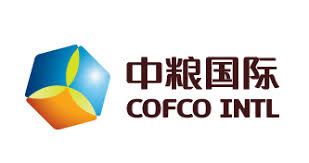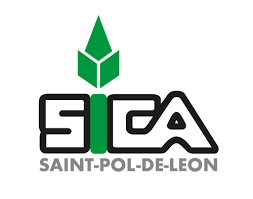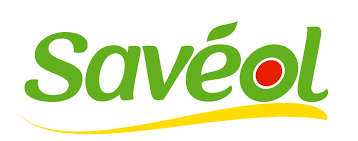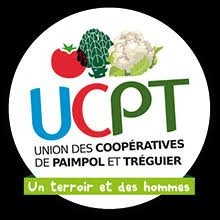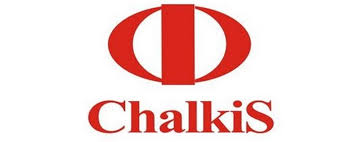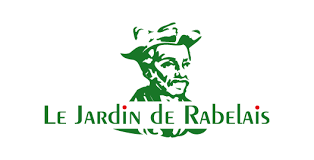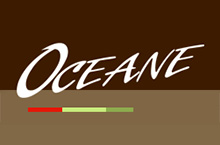Synthèse
The global tomato market has experienced moderate growth, with an average annual growth rate of 0.95%, reaching 186.6 million tonnes produced in 2020, with China and India being the main producers. Fresh tomato production is relatively stable in terms of harvested area, but industrial tomato production has seen a stable market, with 38.7 million tonnes in 2021, representing 20.7% of total production. The main importers are the United States, Germany and France, and the main exporters are Mexico, the Netherlands and Spain.
In France, tomato consumption is high. Despite stable production areas, the volume of fresh French tomatoes fell by 16.1% on average. The Ukrainian crisis highlighted the vulnerability of greenhouse tomato production to energy price shocks, with growers looking for innovations and alternative heating methods. Organic tomato sales increased, in line with trends favoring health, nutrition and local production, despite a 0.5pt drop in organic market share by 2021 due to economic pressures. Industrial processing in France saw sales of 63 million euros in 2020, albeit with an 11% drop in the volume of manufactured products.
Market trends in the French tomato industry
The French market deeply appreciates tomatoes, this vegetable occupying an essential place in the household diet. In 2021, consumption per household showed that fresh tomatoes are in high demand, with an average of around 13.6 kilograms per year, equivalent to an impressive market size of around 1 billion euros in value. Despite a slight increase in production and a rise in farm sales, the French tomato industry faced challenges linked to fluctuating yields. The market is proving resilient, maintaining a high penetration rate throughout the year, even though consumers are becoming increasingly inclined towards seasonality, which is probably driving greater consumption between May and September, which is considered the peak season for tomatoes.
Today, the French market seems to be segmented according to consumer preferences, from "gourmets" and "traditionalists", who prefer aromatic and low-fat varieties, to "gourmets" and "traditionalists", who prefer aromatic and low-fat varieties.from "gourmets" and "traditionalists", who prefer aromatic varieties with old ribs, to "classicists", who appreciate round, sweet tomatoes. The demand for tasty tomatoes has influenced the diversification of supply, leading to an assortment of over twenty types of tomato available on the market, compared with just three twenty years ago. It's interesting to note that the last decade has seen a shift in purchasing behaviour due to French consumers' growing interest in health and the environment. The priority given to healthy, nutritionally-rich foods has enabled tomatoes to come out on top, given their nutritional profile.
However, the market is also faced with the emerging trend towards organic and locally sourced products. These consumer preferences have led to significant growth in organic products, although the trend has slowed slightly in 2021. The contraction of the organic segment can largely be attributed to the increasing financial pressure on households, as organic options are often more expensive.
The French tomato market has not been spared external influences. With its predominant dependence on greenhouse production, which accounts for some 86% of fresh tomato production, the sector has been particularly vulnerable to price rises.was particularly vulnerable to increases in energy costs resulting from global events such as the Ukrainian crisis. This situation has raised concerns among growers about the sustainability of their practices and their profitability in the face of fierce foreign competition.
In conclusion, the French tomato market presents a mix of stability and dynamism, with persistent demand drivenby household consumption and changing consumer preferences towards seasonal and organic varieties. The need to adapt to rising production costs, environmental considerations and international economic pressures remains a crucial aspect of the industry's future progress.
Key players shaping the French tomato market
The French tomato market is fuelled by a dynamic set of players ranging from dedicated growers to processing giants. These entities stand out not only for their performance, but also for their unique contributions to the industry, enhancing the overall tapestry of the tomato market landscape.
Growers who lead the way
- At the cutting edge of production, Prince de Bretagne is emerging as an important player, representing a collective of farmers deeply rooted in Breton agricultural heritage and innovation.
- Alongside Prince de Bretagne, Sica Saint-Pol-de-Léon, another Breton cooperative, symbolizes the region's commitment to tomato excellence.
- Océane, although not confined to Brittany, has secured its position thanks to significant production and has become a leading name in the tomato market.
- Savéol, another Breton company, is not only a leader in terms of volume, but also a pioneer in environmentally-friendly greenhouse technologies.
- Bringing together a vast network of farmers in the south of France, Rougeline stands out for its commitment to diversity and quality in tomato production.
- As for Kultive, it has carved out a place for itself thanks to modern cultivation techniques that meet the evolving demands of consumers.
- Solarenn, the Ille-et-Vilaine cooperative, is riding the wave of its exceptional year-on-year growth, reinforcing Brittany's dominance of the French tomato market.
- Le Jardin de Rabelais and the Union des coopératives de Paimpol et de Tréguier further strengthen this image with their significant contributions to regional and national supply chains.
Processors
- On the processing front, Cofco, an agro-industrial behemoth, illustrates the intersection of scale and global reach in the industry.
- Italy's Mutti is a testament to the quality and tradition-rich processing practices that have won acclaim around the world.
- Chalkis and The Morning Star Company, although on different geographical and operational scales, both contribute to the dynamism of the sector, whether through concentrated sauces or a variety of processed tomato products that meet the taste and culinary demands of consumers worldwide.
Together, these tomato producers and processors form a complex and solid network that ensures the vitality and resilience of the French tomato market. Their collective efforts not only meet domestic demand, but also have a significant impact on international markets, offering a glimpse of French know-how in agriculture and food production.
à la compréhension de ce marché
Détail du contenu
 Informations
Informations
- Nombre de pages : 30 pages
- Format : Version digitale et PDF
- Dernière mise à jour : 01/08/2022
 Sommaire et extraits
Sommaire et extraits
1 Market overview
1.1 Definition and scope of the study
The tomato is part of the fruit and vegetable sector; if it is considered as a fruit on the botanical level, it will be considered in this study as a vegetable because of its place in the culinary sphere. There are nearly 480 varieties of tomatoes on French soil, classified by major categories: round, elongated, clustered...
The tomato has an essential place in the French diet and has become the most produced vegetable in France (it represents 15% of the volume of vegetable production) as well as the most consumed vegetable with nearly 13.6 kg per year and per household in 2021 according to Interfel.
A distinction is made between open-air and "off-ground" tomato production (80% of French production takes place in greenhouses). There are two main outlets in this market:
- the production dedicated to the consumption of fresh tomatoes
- the production dedicated to industrial use (processing, packaging...) which is not done in greenhouses and represents 22% of the volumes produced.
If the production of tomatoes is operated by a number of farmers often gathered in cooperatives, the processing remains the prerogative of large industrial groups and the distribution is dominated by the GSA (large food stores) even if many producers try to benefit from the development of short circuits.
The tomato, like other food commodities, is subject to the volatility of production prices and suffers from the increase in energy prices resulting from the situation in Ukraine.
 Liste des graphiques
Liste des graphiques
- Évolution la production mondiale de tomates fraîches : volume produit et superficie récoltée
- Évolution de la quantité de tomates destinées à la transformation
- Évolution de la part de marché des tomates d'industrie dans la production de tomates
- Répartition de la production de tomates fraîches par pays
- Évolution de la production de tomates (fraîches et d'industrie)
Toutes nos études sont disponible en ligne et en PDF
Nous vous proposons de consulter un exemple de notre travail d'étude sur un autre marché !
Dernières actualités
Entreprises citées dans cette étude
Cette étude contient un panorama complet des entreprises du marché avec les derniers chiffres et actualités de chaque entreprise :
 Choisir cette étude c'est :
Choisir cette étude c'est :
Accéder à plus de 35 heures de travail
Nos études sont le résultat de plus de 35 heures de recherches et d'analyses. Utiliser nos études vous permet de consacrer plus de temps et de valeur ajoutée à vos projets.
Profiter de 6 années d'expérience et de plus de 1500 études sectorielles déjà produites
Notre expertise nous permet de produire des études complètes dans tous les secteurs, y compris des marchés de niche ou naissants.
Notre savoir-faire et notre méthodologie nous permet de produire des études avec un rapport qualité-prix unique
Accéder à plusieurs milliers d'articles et données payantes
Businesscoot a accès à l'ensemble de la presse économique payante ainsi qu'à des bases de données exclusives pour réaliser ses études de marché (+ 30 000 articles et sources privées).
Afin d'enrichir nos études, nos analystes utilisent également des indicateurs web (semrush, trends…) pour identifier les tendances sur un marché et les stratégies des entreprises. (Consulter nos sources payantes)
Un accompagnement garanti après votre achat
Une équipe dédiée au service après-vente, pour vous garantir un niveau de satisfaction élevé. (+33) 9 70 46 55 00
Un format digital pensé pour nos utilisateurs
Vous accédez à un PDF mais aussi à une version digitale pensée pour nos clients. Cette version vous permet d’accéder aux sources, aux données au format Excel et aux graphiques. Le contenu de l'étude peut ainsi être facilement récupéré et adapté pour vos supports.
 Nos offres :
Nos offres :
the tomato market | France
- Quels sont les chiffres sur la taille et la croissance du marché ?
- Quels leviers tirent la croissance du marché et leur évolution ?
- Quel est le positionnement des entreprises sur la chaine de valeur ?
- Comment se différencient les entreprises du marché ?
- Données issues de plusieurs dizaines de bases de données
Pack 5 études (-15%) France
- 5 études au prix de 75,6€HT par étude à choisir parmi nos 800 titres sur le catalogue France pendant 12 mois
- Conservez -15% sur les études supplémentaires achetées
- Choisissez le remboursement des crédits non consommés au terme des 12 mois (durée du pack)
Consultez les conditions du pack et de remboursement des crédits non consommés.
- 23/04/2024 - Ajout des informations de l'entreprise Azura Gourmet Groupe
- 08/02/2024 - Ajout des informations de l'entreprise Panzani
- 08/04/2023 - Ajout des informations de l'entreprise KULTIVE 2
- 21/02/2023 - Mise à jour des données financières de l'entreprise Episaveurs (Pomona Groupe)





 Azura Gourmet lance ses premières sauces chaudes aux tomates cerise - 23/04/2024
Azura Gourmet lance ses premières sauces chaudes aux tomates cerise - 23/04/2024
 Panzani se lance dans les pâtes fraîches et noue un partenariat avec des industriels italiens - 08/02/2024
Panzani se lance dans les pâtes fraîches et noue un partenariat avec des industriels italiens - 08/02/2024
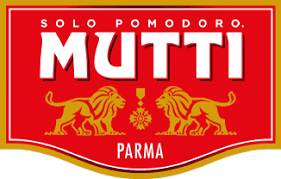 Mutti, champion de la sauce tomate - 05/07/2023
Mutti, champion de la sauce tomate - 05/07/2023
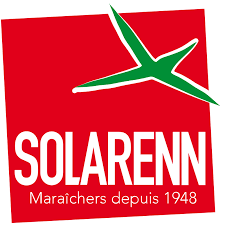 Solarenn roule pour IPP - 06/05/2023
Solarenn roule pour IPP - 06/05/2023

